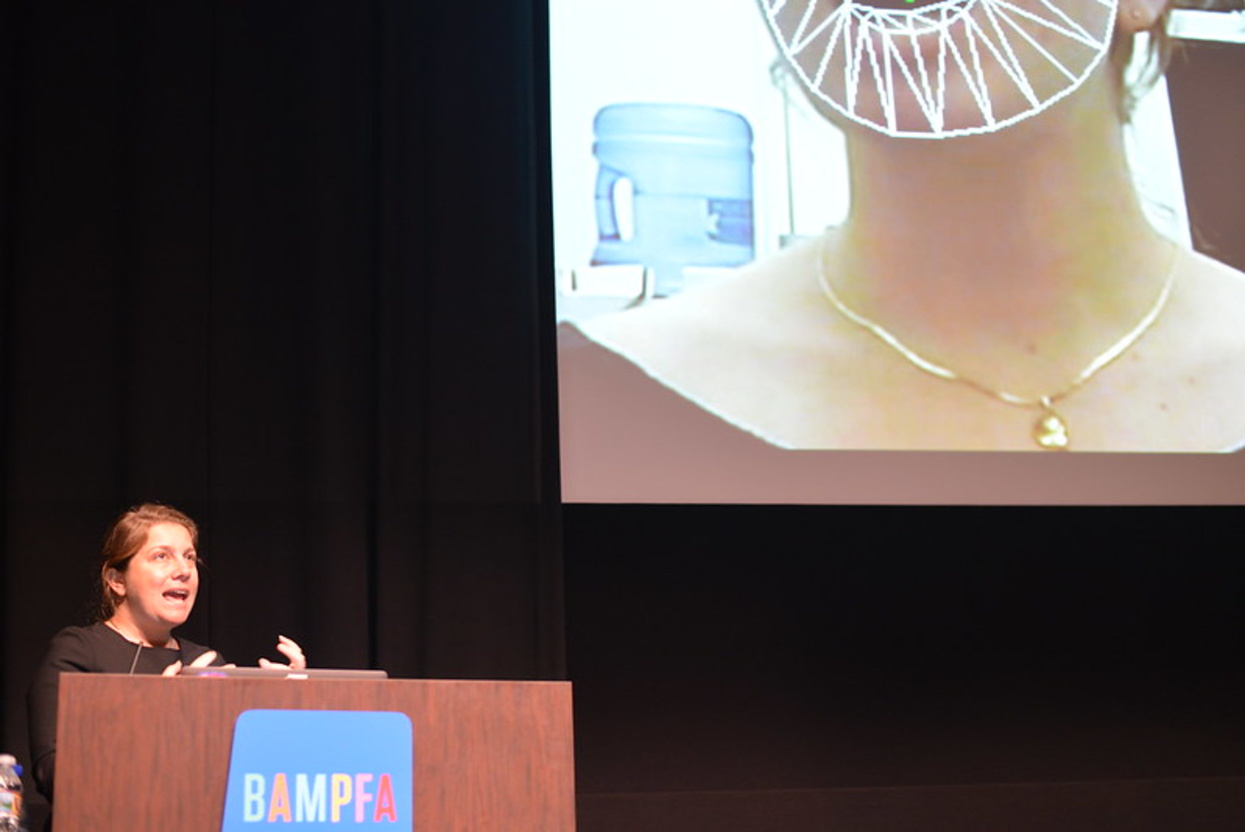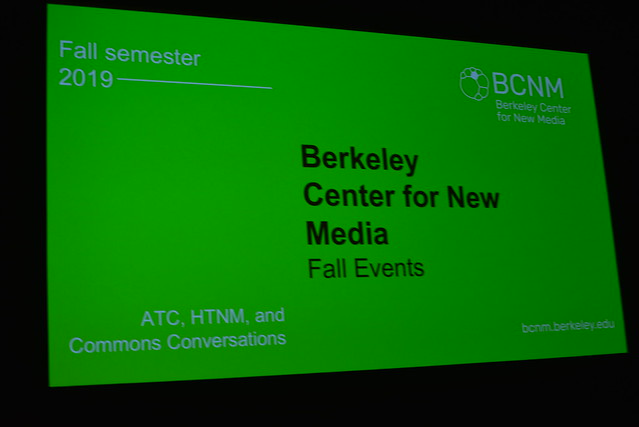ATC Revisited: Madeline Gannon

Recap by KC Forcier, the 2019-2020 Graduate Liaison for the Art, Technology, and Culture Colloquium.
Envisioning a Future with Robots
A funny thing happened to Madeline Gannon during her last semester of architecture school. “I fell in love with a machine,” said the multidisciplinary designer, researcher, and artist at the first ATC lecture of the year. Given the opportunity to use a Techno 4848 CNC Router in one of her seminars, Gannon became smitten with the machine’s ability to take what was in her mind and make it a physical object in the world. “I had to learn to talk to these machines,” she said. Since then, Gannon has gone on to create numerous projects highlighting human-machine interaction which has led some to call her the “Robot Whisperer.” Gannon often takes robots designed for one purpose and adapts them to new purposes, or - as she might put it - unleashes their hidden potential. With Optimization of Parenting: Part 2 (2012), for example, a collaboration with artist Addie Wagenknecht, Gannon reprogrammed an industrial robot to rock a baby’s bassinet. The piece raised questions about different sorts of repetitive labor, while also showing a gentler side to these machines.
While robots have traditionally been the subject of much anxiety, Gannon points out that they have an incredible potential to enhance our lives. “They have superhuman strength, speed, and endurance,” Gannon observes. Her work is interested in how these superhero qualities can be used to augment human lives. “We know the futures we don’t want with these machines,” she says. “We don’t want them to enslave us or replace us. But we are less certain about what the future we do want with them looks like.”
In order to envision a world in which people and robots coexist happily, Gannon’s installations focus on human and machine communication. Mimus (2016) was an industrial robot who Gannon plucked from an assembly line and put on display at the Design Museum, London. Mimus was reprogrammed from the manufacturing tasks she was originally designed to perform, and given the ability to sense and react to human visitors with quirky animal-like gestures. The result is surprisingly charming, although Gannon shared a wide range of visitor reactions to the piece which included suspicion as well as delight.
Gannon is aware of the fears surrounding robots, which are not only anxiety about automation replacing labor, but also about issues such as surveillance and myriad other ways in which robots transform contemporary society. One of the most visible robotics initiatives on the Berkeley campus is the Kiwibot delivery service, which are operated remotely by drivers in Columbia. The questions we might ask are not only about how these robots interact with the students on the Berkeley campus, but how they may disrupt or augment labor practices in the Bay Area and elsewhere. As Gannon rightly points out, robots already “share our cities, streets and skies:” from industrial and logistics robots, self-driving vehicles, and delivery drones, to robots in hospitals and domestic spaces, social robots and assistive tech, they are here to stay. As Gannon’s work demonstrates, it is important for scientists, designers and artists working in robotics to continue to question what sort of future we want with robots, and how we might best harness their power to equitably improve human experience.

